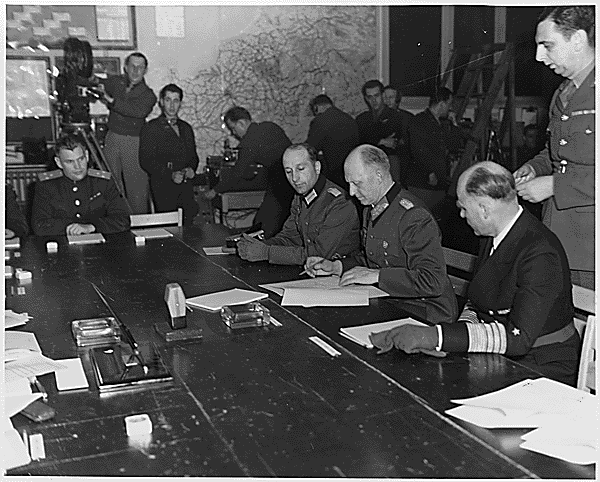May 7, 1945: Final German Surrender
In 1938, the Third Reich's military command structure began to markedly differ from the world's other primary powers when Hitler ordered the Ministry of War abolished. Hitler replaced it with a military command structure titled the OKW (Oberkommando der Wehrmacht or High Command of the Armed Forces). In name, the OKW held responsibility for overseeing the individual military services. In practice, however the OKW offered an opportunity for Hitler to tighten his grip over the OKH or Oberkommando der Heer - the Army High Command.
Alfred Jodl, signing the surrender documents in the picture, spent the Second World War as the number two man in OKW's command hierarchy and thus ranked among the German war machine's top officers. All too often Jodl proved to be the wrong choice for the prominent role he held in the German leadership. Although not quite the political lackey he has been made out to be by other German officers looking for a scapegoat for their own failings following the War; Jodl possessed several less than admirable traits for a military leader, including the fact he was even more of a political
ideologue than many of his colleagues. Overall, Jodl had a detrimental impact on the German war effort, though whether or not a more talented officer would have made a difference in the War's outcome is questionable.
Picture Courtesy US National Archives, ARC identifier no. 195338


